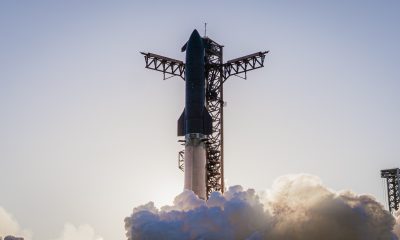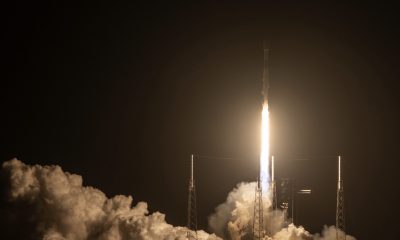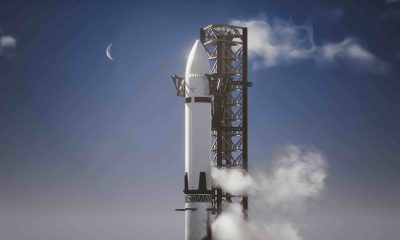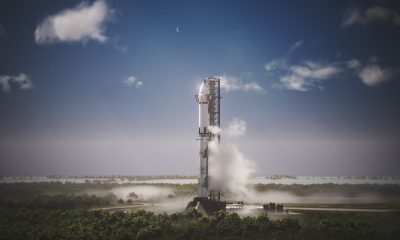Elon Musk
SpaceX Starship launches face pushback in Florida over noise, flights—and nudists
SpaceX is seeking permission to fly its fully reusable Starship system from Launch Complex 39A.
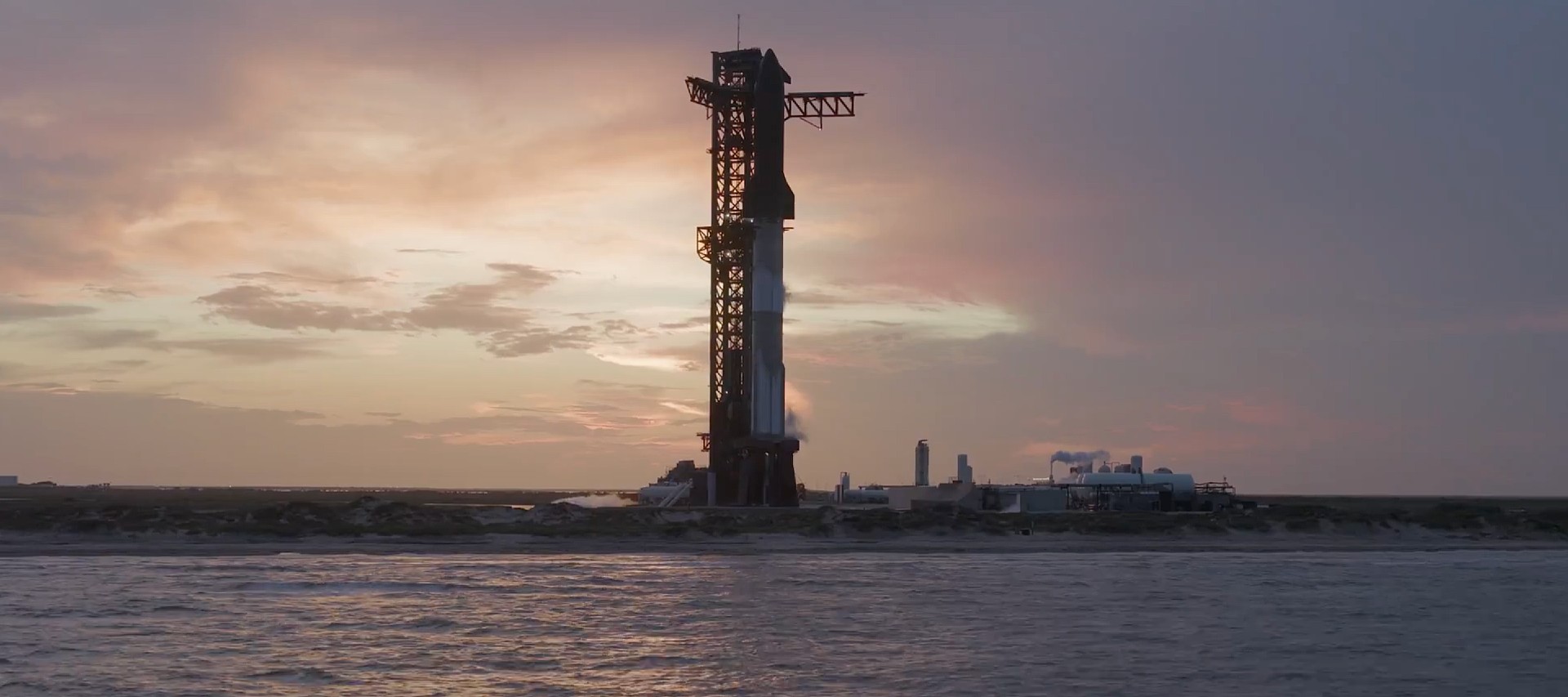
The Federal Aviation Administration (FAA) has wrapped up a series of public hearings on SpaceX’s proposal to launch its Super Heavy Starship rocket from NASA’s Kennedy Space Center (KSC).
The sessions, held both in-person and online, form part of the draft environmental impact statement (EIS) review that will determine whether SpaceX would be cleared to conduct Starship launches and landings from Florida’s Space Coast.
FAA review and Starship launch plans
According to the FAA’s draft EIS, SpaceX seeks permission to fly its fully reusable Starship system from Launch Complex 39A, where construction of a dedicated tower and infrastructure has already begun. Proposed operations could involve landings at KSC or droneships positioned across the Atlantic, Pacific, and Indian Oceans. The FAA emphasized that final approval is not guaranteed with the completion of the EIS, as safety and financial requirements must still be met, as noted in a Space.com report.
Starship’s larger scale compared to Falcon 9 means expanded exclusion zones for air, sea, and beach access. The analysis also projected more than 60 annual closures of Playalinda Beach, alongside potential flight delays across Florida airports lasting 40 minutes to two hours. Port Canaveral would also be affected by maritime restrictions.
Local concerns
Public comments reflected a mix of optimism and unease. Aviation officials, such as Tampa International Airport COO John Tiliacos, warned of significant disruption to commercial flights. “There is the potential that there’s going to be significant impact to commercial aviation and the traveling public. That’s something that certainly the FAA needs to give consideration to and, frankly, come up with a plan to mitigate,” he stated.
Others raised health concerns, noting that chronic sleep disruption from launch noise could impact veterans and trauma survivors. Robyn Memphis, a neuroscience and psychology graduate student, stated that sleep disruptions from launch noise and sonic booms could carry lasting effects. “Chronic sleep disruption is not just inconvenient. This is directly linked to depression, anxiety… cardiovascular disease, even suicide risk. And being in Florida, we have many veterans and trauma survivors in the community,” she said.
Nudist protests and responses
Erich Schuttauf, the executive director of the American Association for Nude Recreation, also argued that places like Playalinda Beach, a nudist beach, are crucial for people who travel to places where public nudity is legal. His sentiments were echoed by fellow nudist Sue Stevens, who noted that “It’s probably a quarter million people that travel and think like I do, who look for destinations that are beautiful and surrounded by like-minded people.”
Photographer Max West, who plans to move to Florida to photograph Starship, noted that the spacecraft presents a notable step forward for humanity. And while its impact to communities is not marginal, the progress it offers is well worth it. “I’m not going to say that there is zero environmental impact there,” he said, though he also stated that there has to be some “little sacrifices along the way. “The turtles and the nudists will have to migrate. That’s the cost that you have to pay for this incredible stuff that’s happening.”
Elon Musk
Tesla to ramp to 500 Robotaxis in Austin, 1,000 in Bay Area, by end of 2025: Musk
This was, at least, as per recent comments from CEO Elon Musk during his appearance on the All-In podcast.

Tesla’s Robotaxi pilot is still in its early stages, but it seems like the program in Austin and the Bay Area will see a notable update soon. This was, at least, as per recent comments from CEO Elon Musk during his appearance on the All-In podcast.
Robotaxi expansion
While discussing Tesla’s Robotaxi ambitions, Elon Musk shared some tidbits about the company’s targets for the autonomous ride-hailing program. As per Musk, Tesla is pushing to increase its Robotaxi fleet size in Austin to 500 units. The Robotaxi fleet in the Bay Area will also be increased to 1,000 units. These expansions are expected to be accomplished by the end of the year.
“We’re scaling up the number of cars to, what happens if you have a thousand cars? Probably we’ll have a thousands cars or more in the Bay Area by the end of this year, probably 500 or more in the greater Austin area,” Musk said in the podcast.
Considering that there are only two months left in the fourth quarter of 2025, Tesla’s Robotaxi team will likely be extremely busy during the next eight weeks. A successful expansion of the Robotaxi pilot in Austin and the Bay Area will also bode well for the company’s ride-hailing program, which has been pretty conservative as of late.
Musk’s Robotaxi comments
Elon Musk has been pretty clear in the past that Tesla’s FSD and Robotaxi network would play a huge role in the company’s future valuation and potential. Thus, during the third quarter earnings call, Musk highlighted that Tesla will also be transitioning to a system with no safety monitors in Austin by the end of the year.
“We are expecting to have no safety drivers in at least large parts of Austin by the end of this year. So within a few months, we expect to have no safety drivers at all in at least parts of Austin. We’re obviously being very cautious about the deployment,” Musk said during the Q3 2025 earnings call.
Elon Musk
Neuralink’s first patient could receive an upgrade: Elon Musk
Musk stated that Arbaugh could also be the first Neuralink patient to receive an upgrade.

Neuralink’s first human patient might be in line for a very interesting development in the future.
Based on recent comments from Elon Musk, Neuralink seems to be considering an “upgrade” for its first human patient, allowing him to perform even more sophisticated tasks using only his mind.
Elon Musk’s recent comments
Musk’s update came as a reply to an X post that featured some details about the current activities of Noland Arbaugh, the first person in the world to receive a Neuralink implant. Since receiving his implant, Arbaugh has been able to take back his life, and he now games, attends class, and even works as a paid speaker.
In his response, Musk stated that Arbaugh could also be the first Neuralink patient to receive an upgrade. “Noland might be the first to receive a Neuralink upgrade and/or dual Neuralink implant to further augment his abilities. It won’t be long before a Neuralink recipient can beat most and eventually all humans at fast reaction video games,” Musk wrote in a post on X.
Noland’s recent update
Noland actually provided a quick update about his life with his Neuralink implant, which he fondly named Eve, on X. He noted that his direct involvement with Neuralink has lessened as more participants have joined the company’s human trials. And despite a recent pressure sore setback, he remains optimistic and teased “big news” coming for his two-year update in early 2026.
Beyond his recovery, Arbaugh stated that Neuralink has made everyday goals achievable again. He is currently studying neuroscience, taking chemistry, biology, and pre-calculus and maintaining good grades, something he said would have been impossible without Neuralink.
Elon Musk
Tesla Cybercab steering wheel dilemma gets final answer from Elon Musk

Tesla Cybercab is the company’s autonomy-geared automobile that will eventually begin the phase-out of human drivers. In recent days, however, there has been speculation regarding the vehicle’s equipment and whether it would be fitted with a typical steering wheel and pedals.
CEO Elon Musk put an end to this discussion, at least for now, as he maintains the vehicle will not have anything that would remotely resemble any possibility of any sort of manual operation.
The problem is, there is a flaw in his logic, and his justification for the reasoning is an opinion. But Musk has a special ability; he has the final say on what goes on at Tesla, and if he does or doesn’t want manual controls in the new vehicle, he’ll get his way.
On the All In Podcast on Friday, Musk gave his final answer to whether the Cybercab would have a steering wheel or pedals by stating it would not when the production units start rolling off lines in Q2 2026.
He provided a further explanation:
“The reality is, people may think they want to drive their car, but the reality is that they don’t. How many times have you been in an Uber or Lyft and said ‘I wish I could take over for the driver, get off my phone, and drive to my destination? 0.0 times.”
🚨 Elon Musk says Tesla will NOT put a steering wheel in the Cybercab (via All In Podcast):
“The reality is, people may think they want to drive their car, but the reality is that they don’t. How many times have you been in an Uber or Lyft and said ‘I wish I could take over for… pic.twitter.com/SGu3to5anA
— TESLARATI (@Teslarati) October 31, 2025
Although the units that have been spotted on public roads in recent days are equipped with a steering wheel and pedals, it is because Tesla is testing the vehicle in real-world situations, and manual controls are required for it.
Tesla Cybercab spotted testing on public roads for the first time
Some Tesla fans in the community have said that the car seems more geared toward being suitable for manual operation as opposed to a fully autonomous vehicle primed for driverless ride-hailing.
Earlier this week, Tesla Board Chair Robyn Denholm said that if the company had to put a steering wheel or pedals into the Cybercab, it would.
-
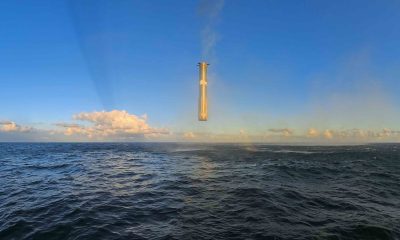
 Elon Musk2 weeks ago
Elon Musk2 weeks agoSpaceX posts Starship booster feat that’s so nutty, it doesn’t even look real
-
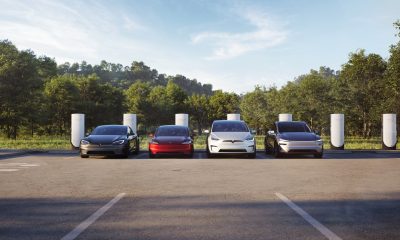
 Elon Musk2 weeks ago
Elon Musk2 weeks agoTesla Full Self-Driving gets an offer to be insured for ‘almost free’
-
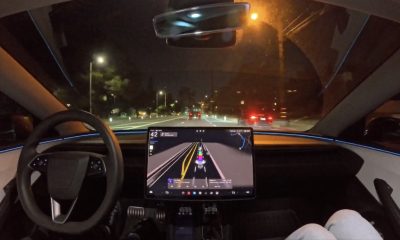
 News2 weeks ago
News2 weeks agoElon Musk confirms Tesla FSD V14.2 will see widespread rollout
-

 News2 weeks ago
News2 weeks agoTesla is adding an interesting feature to its centerscreen in a coming update
-
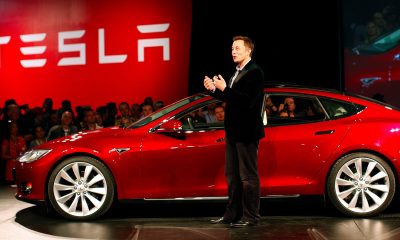
 Elon Musk2 weeks ago
Elon Musk2 weeks agoTesla CEO Elon Musk’s $1 trillion pay package hits first adversity from proxy firm
-
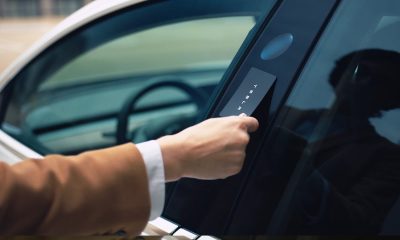
 News2 weeks ago
News2 weeks agoTesla might be doing away with a long-included feature with its vehicles
-
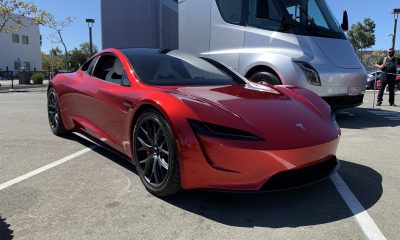
 News2 weeks ago
News2 weeks agoTesla updates fans on its plans for the Roadster
-

 Elon Musk2 weeks ago
Elon Musk2 weeks agoAfter moving Tesla to Texas, Elon Musk is back in the Bay Area with Neuralink expansion




